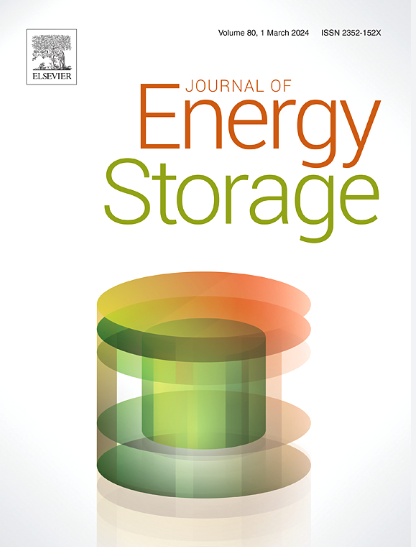Thermoeconomic and sustainability analysis of a compact, unglazed solar air heater with cetearyl alcohol-based thermal energy storage assembly
IF 8.9
2区 工程技术
Q1 ENERGY & FUELS
引用次数: 0
Abstract
Solar energy is actively applied in both thermal and electrical practices. This experimental study examines the performance of a solar air heater consisting of PVT collectors and a cetearyl alcohol-based thermal energy storage unit integrated into the back of the collector. Contrary to conventional ones, alternative thermal energy storage material has been put forward, and its suitability in PVT collectors has been investigated. Three different configurations of equipment were assembled: a PVT (a conventional thermal-photovoltaic system without any modifications), a FTS/PVT (thermal-photovoltaic system with modifications such as finned and thermal energy storage unit), and a TS/PVT (thermal-photovoltaic system with modification only over thermal energy storage unit), and later the three of them were experimentally analyzed under the conditions of low and high airflow rates. Energy and exergy analyses were conducted on each designed system. A cost analysis was also carried out on each PVT. According to the findings, the maximum thermal energy efficiency occurred while using the TS/PVT system under 2.3 m/s air flow rate conditions. In other words, under this airflow rate condition, the biggest average thermal energy efficiency value was 67.24 %, achieved by TS/PVT, followed by FTS/PVT with 64.68 % and PVT standing at the end of the list with 60.19 %. Yet the maximum thermal exergy efficiency was attained at an airflow rate of 1.7 m/s, and the average thermal exergy efficiencies at this air flow rate were found as 14.30 %, 15.88 %, and 11.38 % for PVT, FTS/PVT, and TS/PVT, respectively. Considering the data, the sustainability analysis of each system was studied in terms of the sustainability index values. It can be ultimately reported that the performance of solar air heaters can be enhanced with such modifications, and cetearyl alcohol can be used as an alternative thermal energy storage material in PVT systems.
具有乙醇基热能储存组件的紧凑型无釉太阳能空气加热器的热经济性和可持续性分析
太阳能在热能和电能方面都得到了积极的应用。本实验研究考察了太阳能空气加热器的性能,该加热器由PVT集热器和集成在集热器背面的乙醇基热能存储单元组成。与传统储热材料不同,提出了替代储热材料,并对其在PVT集热器中的适用性进行了研究。组装了三种不同配置的设备:PVT(未进行任何改装的常规热光伏系统)、FTS/PVT(经过翅片和蓄热单元改装的热光伏系统)和TS/PVT(仅经过蓄热单元改装的热光伏系统),并对这三种设备在低流速和高流速条件下进行了实验分析。对每个设计系统进行了能量和火用分析。研究人员还对每个PVT系统进行了成本分析,结果表明,在2.3 m/s空气流速条件下,TS/PVT系统的热效率最高。也就是说,在该风量条件下,TS/PVT的平均热效率值最大,为67.24%,其次是FTS/PVT,为64.68%,PVT排在最后,为60.19%。在1.7 m/s的气流速率下,PVT、FTS/PVT和TS/PVT的平均热用能效率分别为14.30%、15.88%和11.38%。结合数据,从可持续性指标的角度对各系统进行可持续性分析。最终可以报道,通过这种改性可以增强太阳能空气加热器的性能,并且乙醇可以用作PVT系统中的替代储能材料。
本文章由计算机程序翻译,如有差异,请以英文原文为准。
求助全文
约1分钟内获得全文
求助全文
来源期刊

Journal of energy storage
Energy-Renewable Energy, Sustainability and the Environment
CiteScore
11.80
自引率
24.50%
发文量
2262
审稿时长
69 days
期刊介绍:
Journal of energy storage focusses on all aspects of energy storage, in particular systems integration, electric grid integration, modelling and analysis, novel energy storage technologies, sizing and management strategies, business models for operation of storage systems and energy storage developments worldwide.
 求助内容:
求助内容: 应助结果提醒方式:
应助结果提醒方式:


